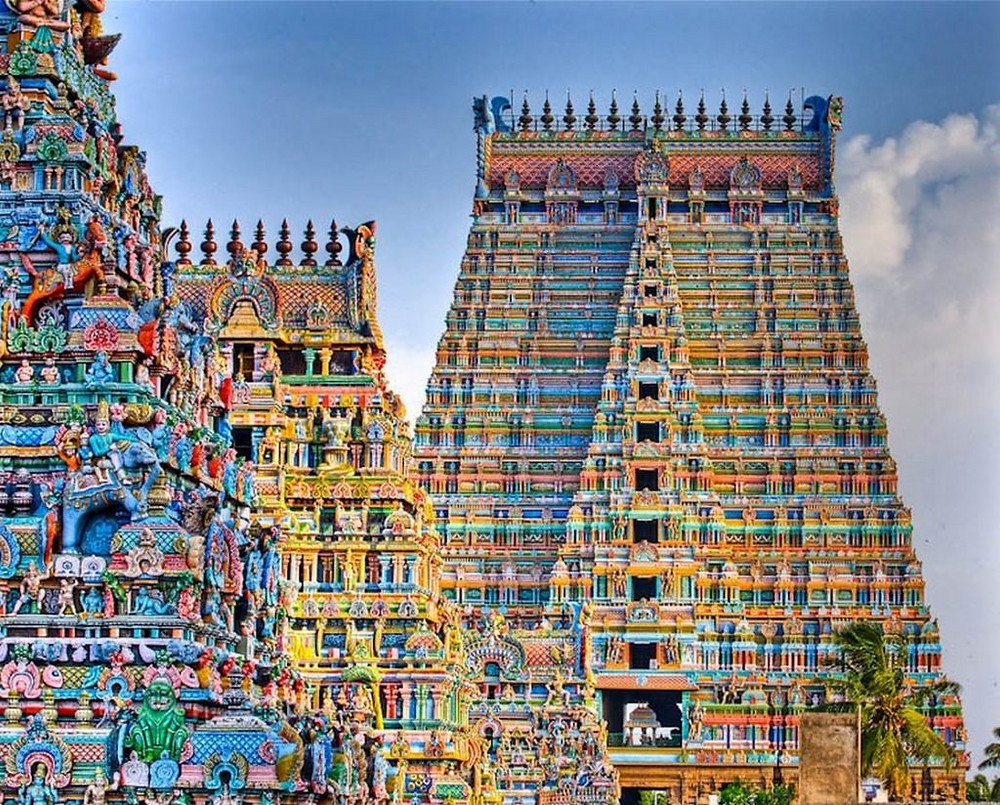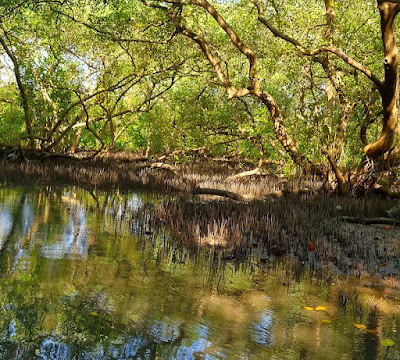"The
forests hold answers to questions we have yet to ask!"
In the fairytale jungles of
Nelliyampathy,there were probably no witches living in the houses made of
chocolate and wafer. Nor there were elf lurking behind the trees to jump at
you. Yet there were fascinating sights and magical stories unfolding all the
time. These evergreen forests, located in Palakkad district, were warm and
welcoming when we entered them recently. It was already dark, and the
almost-full moon of Phalgun was spreading its light on the hills. The route was
looking enchanted, and I realized that I have perhaps not seen a jungle in the
dead of night for a very long period. At least not a jungle as rich and dense
as it was there. A sambhar deer crossed the highway unafraid of our car
headlights and we could hear sounds of owls and other nocturnal beings. I was surprised
to find our place of stay next to a tea factory and surrounded by tea gardens. Even so late in the night, we were so excited by the beauty of the place that we
went out for a walk around as soon as we reached. I and bestie agreed that some experiences are so
priceless that one should take extra efforts to make them happen. Visiting Nelliyampathy
hills to meet the famous Great Indian Hornbill, the state bird of Kerala, featured
in our list for such experiences.
Trees are the
earth’s endless effort to speak to the listening heaven.
–Rabindranath
Tagore
Next morning at six, the light was yet to come out when we started our chase for these magnificent birds amidst the misty hills. Fortunate to have an expert wildlife photographer with us who knew exact locations of the nests, we soon parked ourselves in a tea estate staring at a tall tree with a hole. The female hornbill was inside the nest with the chicks and male was out somewhere to bring fruits for them. This self-imprisonment at the time of procreation was as fascinating to witness as it was when I first heard of it.
The hole in the tree trunk was barely enough for the beaks to exchange fruits and other food item. Though it was still Phagun as per calendar, the temperature had been rising beyond comfortable level. In the dense shades of trees however one felt relaxed and the morning breeze with the sounds of hill Myna made us forget the worries of the world beyond the jungle. For a while there was nothing much to explore except some Nilgiri langoors jumping on a tree and green avocados hanging from a tress. Then we heard the unmistakable flapping of wings and there it was- a huge male hornbill which came and sat strategically on a tree across the nest. After getting assured of no imminent danger around, it flew to the nest and the feeding started. As if like a clockwork, every two hours the male bird brought feedings and passed on to its partner. Still in a daze of incredible beuty of what we saw, we moved on to another location where the female had successfully completed her confinement and was out in light few hours back. Perhaps the most endearing sight of birds ever witnessed by me, the male partner was looking anxiously at the nest for female to appear and had a gift of freshly hunted snake in its beak as a gift.
The scene of this love story was no less than a TV soap. The female bird appeared all weak and tired, finding difficult to fly far. She perched herself on a nearby tree to first sharpen her beak. I have read these beautiful birds are monogamous and they never change partners in their lives. If male hornbill fail to return with food, the female will simply die in her self imposed prison- the nest.
Though still enamoured by the family drama of hornbills, we got distracted by a group of Liontail Macaque who discovered a tree full of ripe jackfruits and attacked it with gusto. These monkeys, covered in black fur with striking gray or silver mane, are Old World monkeys (primates) endemic to the Western Ghats of South India. From 1977 to 1980, public concern about the endangered status of lion-tailed macaque became the focal point of Save Silent Valley, India's fiercest environmental debate of the decade. Our expert explained how their sighting is very rare and we were fortunate to see so many of them so easily.
Despite our eyes fixed on the romantic hornbill couple, we could not help noticing the other equally captivating glimpses of the jungle like a hanging ant nest or the movement of other birds of the forest. Not wanting to disturb the peace of hornbills we moved on to far further deep inside the jungles, The road was non-existent after a while, and the jungle was all powerful and glorious. In absence of any mobile signal, most of the time, the silence of jungle was broken only by the symphony of crickets and calls of peacocks. It is not just that big birds like hornbills or monkeys who weave the rich tapestry of these jungle lore, there are even bigger ones like elephants and tigersto make the story interesting. Though often missed by casual tourists, there are also small lives of say blue frogs or giant wood spiders who are part of this ecosystem.
Perhaps one of the cutest among all was the Giant Malabar squirrel happily jumping from tree to tree. On our way inside the forest, we encounter a most unexpected event of migration of dark blue tiger butterflies.
I have certainly not seen so many butterflies together in my life. I am also sure if someone would have told me that they are fairies in disguise and the whole scene is part of a fairytale, I would have believed that.
Jungles have an aroma of their own. The smell of dead leaves, moss, decayed trees and dead animals and water accumulated. But this jungle was fragrant beyond imagination with -coffee blossoms. I have seen coffee plants and plantations earlier also but somehow, I never knew that coffee blossom is so exquisite and so fragrant. It was a heady floral smell, much similar to that of lime blossoms and we loved every breath of it.
Reaching some 16 km inside the forest, after passing some incredible lakes abuzz with groups of tiny birds, we arrived at a watchtower overlooking entire hill range. It was full moon night and though the daylight was not yet gone, the moon was smiling over us in its glory.
Next morning the sky brought incredible colours at sunrise and the valley was bathed in hues of pink and orange. The misty mountains glistened as far as eyes can see. Hills woke up with the sounds of crickets, peacocks, and monkeys. Lakes by then were already abuzz with so many birds. The quiet of the tea and coffee plantations were broken by the bulbuls hopping around. In next hour, I saw a colony of blue-black frogs on the lakeside, groups of dollarbirds, a pair of Malabar grey hornbill and many other birds. There were spotted deer also grazing merrily and the ambience was so unreal that it made us forget the time. At a distance we could hear elephants too.




































